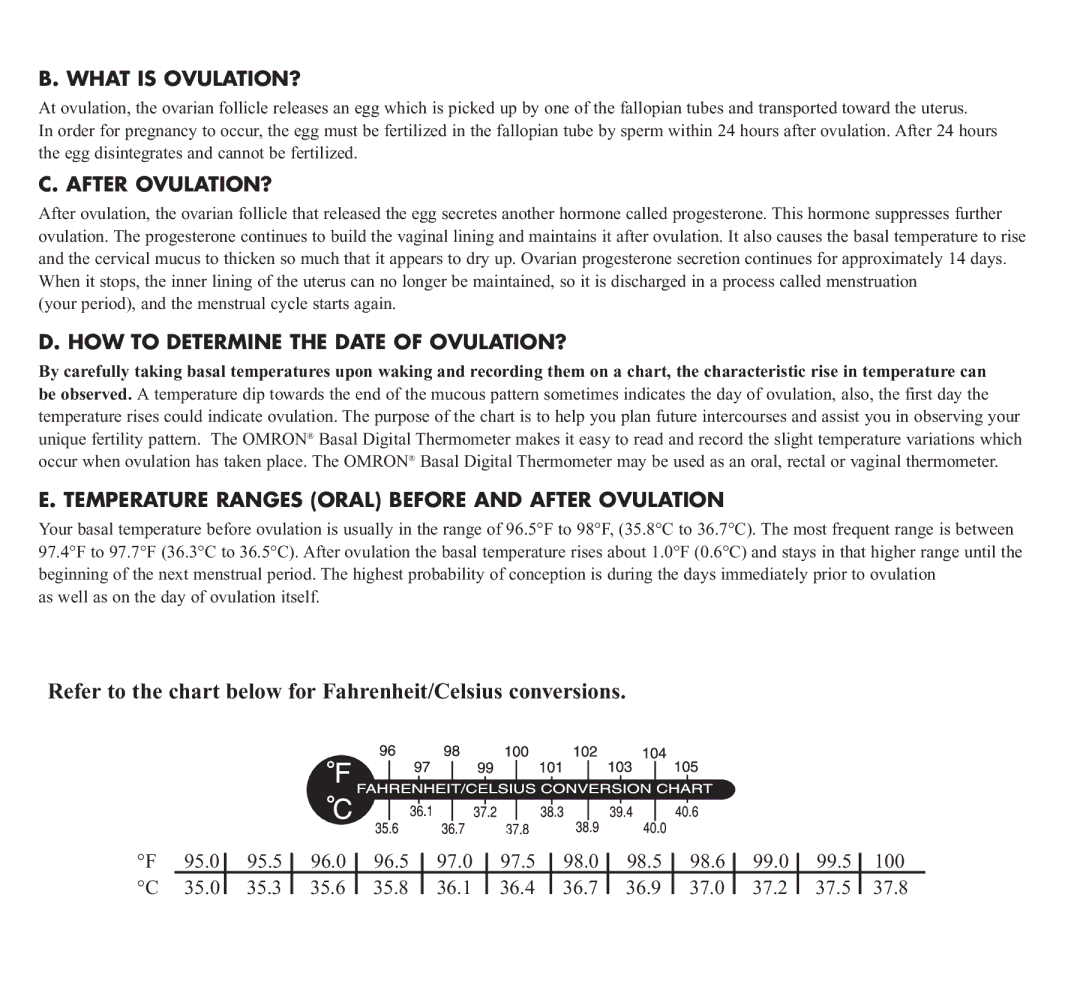B. WHAT IS OVULATION?
At ovulation, the ovarian follicle releases an egg which is picked up by one of the fallopian tubes and transported toward the uterus.
In order for pregnancy to occur, the egg must be fertilized in the fallopian tube by sperm within 24 hours after ovulation. After 24 hours the egg disintegrates and cannot be fertilized.
C. AFTER OVULATION?
After ovulation, the ovarian follicle that released the egg secretes another hormone called progesterone. This hormone suppresses further ovulation. The progesterone continues to build the vaginal lining and maintains it after ovulation. It also causes the basal temperature to rise and the cervical mucus to thicken so much that it appears to dry up. Ovarian progesterone secretion continues for approximately 14 days. When it stops, the inner lining of the uterus can no longer be maintained, so it is discharged in a process called menstruation
(your period), and the menstrual cycle starts again.
D. HOW TO DETERMINE THE DATE OF OVULATION?
By carefully taking basal temperatures upon waking and recording them on a chart, the characteristic rise in temperature can
be observed. A temperature dip towards the end of the mucous pattern sometimes indicates the day of ovulation, also, the first day the temperature rises could indicate ovulation. The purpose of the chart is to help you plan future intercourses and assist you in observing your unique fertility pattern. The OMRON® Basal Digital Thermometer makes it easy to read and record the slight temperature variations which occur when ovulation has taken place. The OMRON® Basal Digital Thermometer may be used as an oral, rectal or vaginal thermometer.
E. TEMPERATURE RANGES (ORAL) BEFORE AND AFTER OVULATION
Your basal temperature before ovulation is usually in the range of 96.5°F to 98°F, (35.8°C to 36.7°C). The most frequent range is between 97.4°F to 97.7°F (36.3°C to 36.5°C). After ovulation the basal temperature rises about 1.0°F (0.6°C) and stays in that higher range until the beginning of the next menstrual period. The highest probability of conception is during the days immediately prior to ovulation
as well as on the day of ovulation itself.
Refer to the chart below for Fahrenheit/Celsius conversions.
°F | 95.0 | 95.5 | 96.0 | 96.5 | 97.0 | 97.5 | 98.0 | 98.5 | 98.6 | 99.0 | 99.5 | 100 |
°C | 35.0 | 35.3 | 35.6 | 35.8 | 36.1 | 36.4 | 36.7 | 36.9 | 37.0 | 37.2 | 37.5 | 37.8 |
